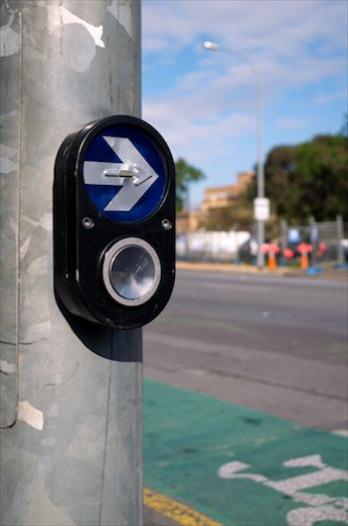We went walking
Duration/age

We went walking and what did we see?
Windows - round ones, long ones, narrow ones, patterned ones and ones with writing.
We went walking and what did we hear?
Noises - birds chirping, bees buzzing, car horns tooting, people laughing, crossings beeping and lifts dinging.
We went walking and what did we feel?
Textures - rough and lumpy ones, smooth and slippery ones, sharp and prickly ones, soft and squishy ones.
We went walking and what did we breathe in?
Smells - bread cooking, fruit ripening, flowers blooming, perfume spraying, rubbish bins smelling.
Next time you are out with your child talk about what you see, hear, smell and feel.
Materials you will need
- Your eyes, ears, fingers, feet and nose
Skills this activity improves
Why does this matter?
Children have a natural sense of wonder about the world around them. Stopping and talking about the things you notice as you travel helps children to make sense of what they observe. It also helps them to organise the information into meaningful patterns.
Talking together about what you have noticed on your travels helps your child to ask questions. As they notice objects they can group them and compare the differences. As they talk about what they notice they are developing language to describe their thinking and observations.
When children begin to describe their thinking they have started to hypothesise. When they hypothesise they are beginning to connect what they see to past experiences and to use this information to make decisions, reflecting on why things have happened.
What does this lead to?
Some children are naturally curious and creative, taking risks in their learning. Children who are naturally curious and creative often notice and wonder about what they see around them. They will ask questions and create their own answers. These children have a natural disposition to be creative and curious.
Talking about and exploring the natural and everyday environment with your child will help them to develop the skills to notice, take risks and ask questions. Even if your child does not have a natural disposition to be creative and curious, by exploring and posing questions you are helping your child to experiment with different ways of thinking.
Language to use
- Smell, odour, fragrance, whiff, waft, stench, stinky
- Touch, feeling, texture, rough, smooth, slippery, sharp, prickly, ouch
- Sight, view, vision, see
- Hear, sound, noise, chirp, beep, buzzing, tooting, dinging
- Senses
- Window, surface, door, ground, building, rubbish bin, crossing, lift
- Garden, plant, flower, animal, insect, bird, people
- Long, short, round, patterned
Questions to use
- Do all buildings have the same shaped windows?
- Where could we find a garden?
- Do all footpaths feel the same?
- What part of a building could be smooth?
- How would you open the door if the handle was prickly?
Useful tips
- If your child is quite a bit younger just focus on one sense when you are out and about.
- If your child is younger you could make a book of things to notice before you head out.
- Sometimes it can be very scary to touch and feel new textures that appear rough or spikey.
- Remember to talk to your child in your home language.
More ideas
- Make a list of things you have noticed when you are out and about. Sort them into what you like or don’t like.
- Take photos of your wonderings and noticings. You could use these to make cards, lotto games or memory cards.
- Make your own storybook.
Variation by age
Birth to two year olds
- Borrow books from the local library that are about noticing and wondering.
- Print out a picture of something you can expect to see in your travels. Encourage your child to find the real object when you are out and about.
- Talk about what you will see on your travels.
- Make a feely bag of different textures.
- Knit a texture scarf for holding and cuddling.
Three to five year olds
- Make a map of the route you have travelled. Mark on the map where you have noticed different things.
- Make a texture book.
- Borrow books from the local library that are about noticing and wondering.
- Try and discover a new describing word every day.
- Make a word wall.
Questions to ask
- Where is the window?
- Is the window above the door?
- Which one is prickly?
- What can you hear?
Questions to ask
- Will we see the same things if we travel a different direction?
- Are there different words to describe a flower?
- How do you know the shop bakes bread?
- Are all smells nice?
Language to use
- Soft, smooth, lumpy, bumpy, scratchy
- Above, below
Language to use
- Route, map, plan, direction, location
- Words, language, description
- Shop
- Smell, odour, pleasant, fragrance, icky


